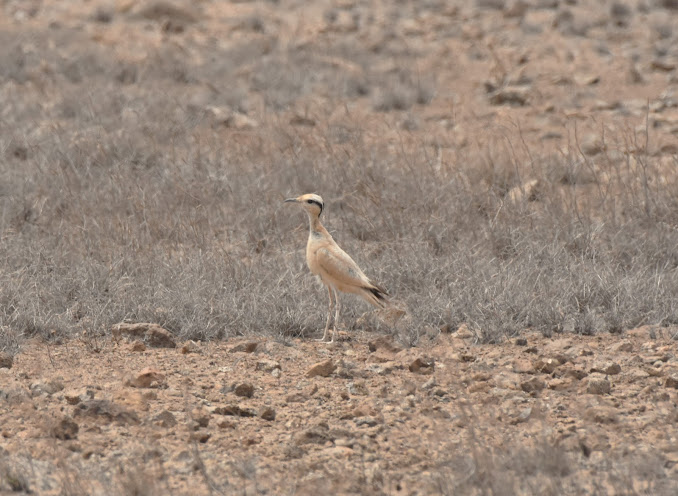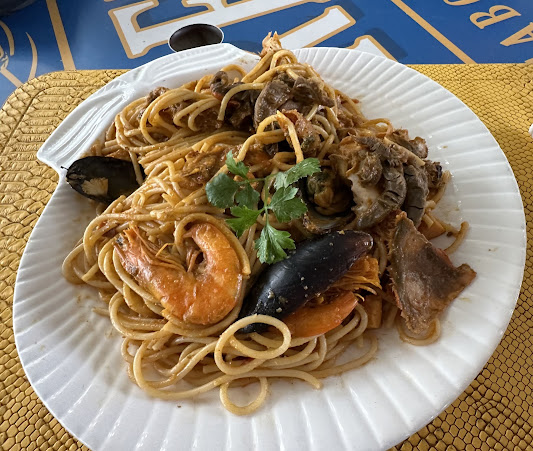Birding Sleuth
I love playing detective and keeping my costs down. After I print out my list of birds that I need to find, I break down the habitats that I need to visit. Then I plan:)

Little Egret
After the exploration of the dunes for the lark species, I began some creative and fun planning for several important endemics. I mapped out the island and looked for cliffs which there are only a few. I also searched for a grassy stretch that was undisturbed by human activity. While Sal is a dry island, it does not lack vegetation. In some parts, I am reminded of my own Arizona desert with all the mesquites.
So the next part required me to be a "tourist" for 2 days. I planned a lovely boat trek out along the island searching for sea birds and swifts. The second day was around the island in a truck searching for the Cream-colored Courser which breeds on the Cape Verde islands. However, it does not like humans too much and stays further back. Normally birders have to go to north Africa to get these birds but thankfully, the peaceful Cape Verde Islands are in their western most breeding range.
To plan for these tourist trips, I made sure I was in the front seat so that I could scan ahead of the truck. Most tourists want to be in the open back of the truck for about.....a half hour:) There were 2 target areas. The first was Buracona where I suspected the Cream-colored Coursers to hang out since there are no humans on that part of the island. They were supposed to be in the dunes, but I never found them.
The tourist routes allowed me to get to meet the type of tourist that comes to Cape Verde for vacation, mostly European and generally an older crowd. On this day, I was placed with a British crew which allowed me to interpret between the english poor guide and people. I didn't mind doing it since I had claimed the front seat.
It was a fun day out revisiting older haunts like the Italian run salt mine of Pedra Lume. I kept bird records at each of the locations. And we also stopped to see the breeding grounds of the Lemon Shark. That was fun and something new for me.
On both days, it seemed Palmeira would be the stopping point as it is the main harbor for the island of Sal. It's also another spot that tourists go for dinner and also to visit places like the Blue Eye or Buracona.
For birders, it's a great place to see wading birds, gulls and other ocean birds. So on this particular day, I wanted to inspect a very hole-y rock wall and the only small islet of Sal for breeding ocean birds.
Cape Verde Storm-Petrel
After my first endemic was checked off, I began to look for the other 2 endemics, the Cape Verde Shearwater and Cape Verde Swift. I had met a German birder several days earlier who had been frustrated he couldn't find the species. However, he was with his family. Still, if you know where to look, you can pretend to be on a family trip while you are birding by covering it up with this fun boat trek:) If you do want to do a pelagic, I mean family trip on the sea, just go to the main pier in Santa Maria to set it up or to the several agencies along the tourist stretch. They'll never figure it out. Well, maybe your spouse will:)
And if you know tourist destinations, they love to also find protected bird sanctuaries. They did follow the rules and shut their music off. People did scuba dive off the boats but never disturbed the rocks where the birds were nesting. However, the captains of the vessels should have told the tourists why the area went into silent mode. As they were all laughing and splashing in the ocean, I trained my eyes on the brown rocks and let them adjust to any movement of brown or plain birds. 5 minutes later, I saw the party happening all over! There were swifts, kestrels, ravens, buzzards, and a Cape Verde Shearwater that entered a burrow!!! Yes! My gamble paid off! Yay research and experience!
Of course, no one cared about the birds. But finding the endemics was everything. The only bird I missed on the trek was the very special Raso Lark which is on a protected and somewhat far islet. I can take that loss for now.
Cape Verde Swift
The joy of watching the Cape Verde Swifts swoop around the cliffs was exciting. Sometimes they would come down to the boats. This rock cliff is one of 3 on the island that has breeding colonies of many species of ocean birds even though it's not widely known. And it's the only one you can get decent views of birds up close.
As we headed back to the port of Palmeira, we were treated to lovely views of Brown-necked Ravens, Eurasian Kestrels, Little Egrets, Eurasian Ospreys, Gray Herons and even a distant Red-billed Tropicbird(more on that in another post). I did my own work and I felt proud of myself for getting my own birds. I am a guide and should figure out much of this on my own, but sometimes I will find a local guide for that rare case of help for added security or entering restricted areas. Otherwise it feels like cheating using a guide to find birds. I understand that many people need guides and I'm not judging the use of guides because it's why I am one. It's just a personal goal for myself. It's like a badge of honor for me. Once a guide told me that I'd never be able to find my own birds when I started birding and I took that as a challenge. Today, I make my own rules and I'll be damned if anyone tells me otherwise.

Along with the few endemics that can be found on the islands, you'll also find many far ranging birds from Europe like the Little Egret. It's always a treat to see these birds when in their range.
Cream-colored Courser
This was my second and most wanted bird on my Cape Verde list besides the Black-crowned sparrow-lark.
We watched as a pair foraged around the grasses. It was my first courser I have ever seen. They breed all over the islands but they can be tricky to find. Several locals, who became new birder friends, shared with me several days later that there were 3 or 4 known pairs nesting on the island. I confirmed that this pair was still there. Checking the reports now after the trip, it looks like they were all successful with their nesting. In the dunes, 7 were reported. In a private area for the rich outside of Santa Maria, 5 were reported.
If the birds are the destination, then the journey is the most important one because we gain knowledge and experience as we explore new territories.
You'll see locals collecting shellfish, fishing and living from the ocean's riches.
You'll see old shipwrecks that they've left for tourists to ask questions. Or wonder what it was like back in the day.
You'll see wildlife protected thanks to tourism dollars. Those dollars set aside very important habitat today for sea turtles and ocean birds around the island. Locals see the $$$ and benefits from the tourists coming to see these magnificent creatures. So poaching for eggs is way down. However, feral dogs still raid the nests which is a huge problem. Several agencies now exist on the island to monitor the wildlife. Back in 1999, there was no such thing.
You can't touch the sharks but if they touch you....
There was nothing scarier than seeing the adults off in the distance with their big fins sticking out of the water. And while the "babies" were smaller, they were still pretty big:) For every 16 Europeans, there's that one odd Dutch or Swedish person mixed into the crew. I have found that they generally have a very odd sense of humor. This Swedish guy was touched by one of the sharks and had to shout it out for everyone to hear. As an American, I'm pretty cynical about everything and was hoping the shark would take a bite out of his leg:) Another tourist wondered if it was a good idea to put his cell phone under water to see the sharks. In theory, that would be cool but it's salt water and not a great idea unless you have the gear. He did not. His phone died after that stop:)
I'm not a big fish person but I do love seafood. We went to this great Italian seafood restaurant where I had a real mix of seafood pasta. There was shrimp, mussel and octopus. It was good but messy.
On a last note, the more I was on Sal, the more I realized how foreign interests have taken over this island. You have the Italians who recognized Sal was an amazing destination since the 90's when they began to invest around the beach areas. Then the Chinese came across the islands and put in stores. Meanwhile the Senegalese have moved into the area and have taken over a lot of the tourism sector. The Cape Verdeans do not like the Senegalese. One Muslim leader from Senegal thought he could blare his anthan, their morning prayer, in Santa Maria. The locals went wild and the police shut down that morning ritual quickly. It's not that Cape Verdeans don't like loud music, but they love the peace and tranquility of their mornings more. Sal is a CHILL island and they capitalize on it. It's pretty sacred. Mornings in Santa Maria were my favorite.
With another set of birds done, I set out to learn more about known birds that breed on Cape Verde and closely study an area around the waste water treatment plant near Santa Maria. I also find a sign that offers birdwatching! What??!! And for 25 dollars a day? Stay tuned for more as we explore the culture and birds of Cape Verde.


























Comments
Post a Comment